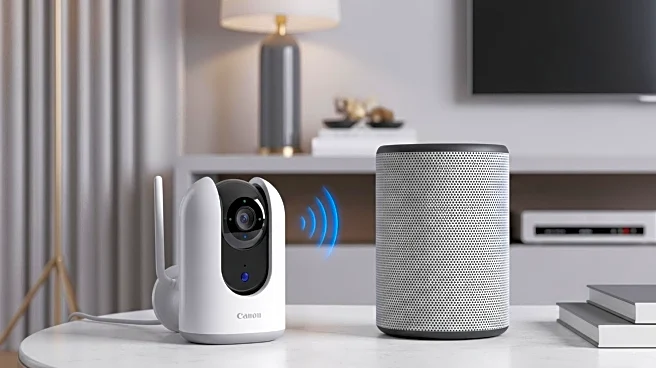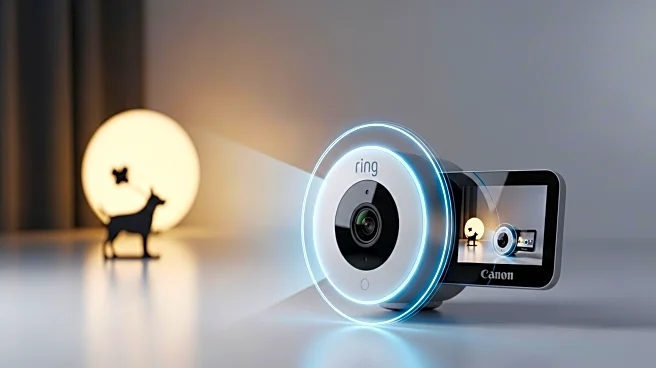What's Happening?
Amazon has introduced a new lineup of devices, including Echo speakers, Fire TV streaming devices, a Kindle reader, and improved Ring and Blink cameras, all optimized for its updated Alexa+ voice assistant. The announcement was made at an event in New York, where Amazon showcased these products designed to enhance home security and user interaction through advanced artificial intelligence. The new Echo devices, including smaller Dots and Show models, are priced between $99 and $219 and are equipped with new silicon chips for faster processing. Additionally, the updated Ring cameras feature facial recognition capabilities to improve home security by identifying visitors and potential threats.
Why It's Important?
This development is significant as it represents Amazon's continued investment in AI technology to enhance its Alexa service, which has been a substantial financial commitment for the company. By integrating advanced AI features, Amazon aims to make Alexa more personalized and conversational, potentially increasing its profitability. The introduction of improved security features in Ring devices also highlights Amazon's focus on home security, a growing market segment. These advancements could strengthen Amazon's position in the smart home industry, offering consumers more sophisticated and secure options for home automation and monitoring.
What's Next?
The new devices are set to be available for purchase in the coming weeks, with the Ring cameras expected later this year. As these products enter the market, consumer response will be crucial in determining their success. Amazon's competitors in the smart home and AI sectors may also respond with their own innovations, potentially leading to further advancements in the industry. Additionally, the integration of AI in home security raises questions about privacy and data protection, which may prompt discussions among policymakers and consumer advocacy groups.
Beyond the Headlines
The introduction of AI-powered home security devices by Amazon could have broader implications for privacy and data security. As these devices become more prevalent, there may be increased scrutiny over how data is collected, stored, and used, particularly concerning facial recognition technology. This could lead to regulatory challenges and necessitate clearer guidelines to protect consumer privacy while allowing technological innovation to continue.












